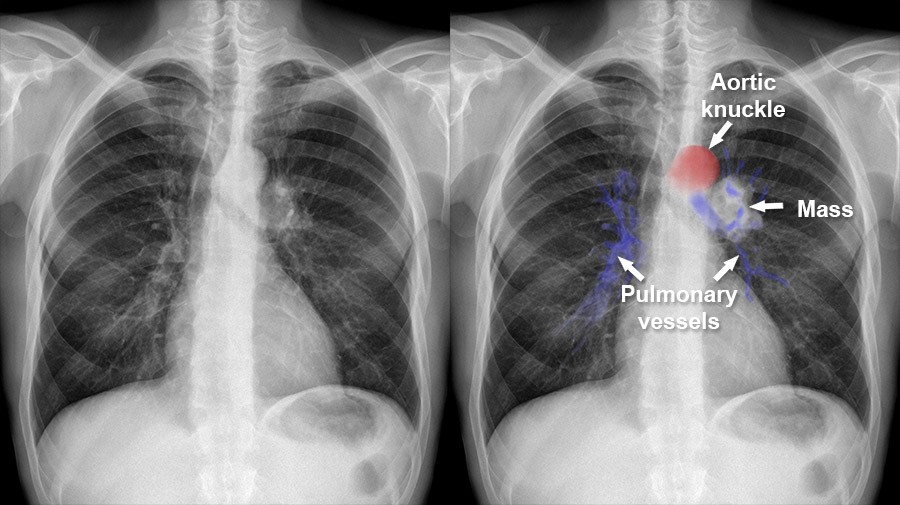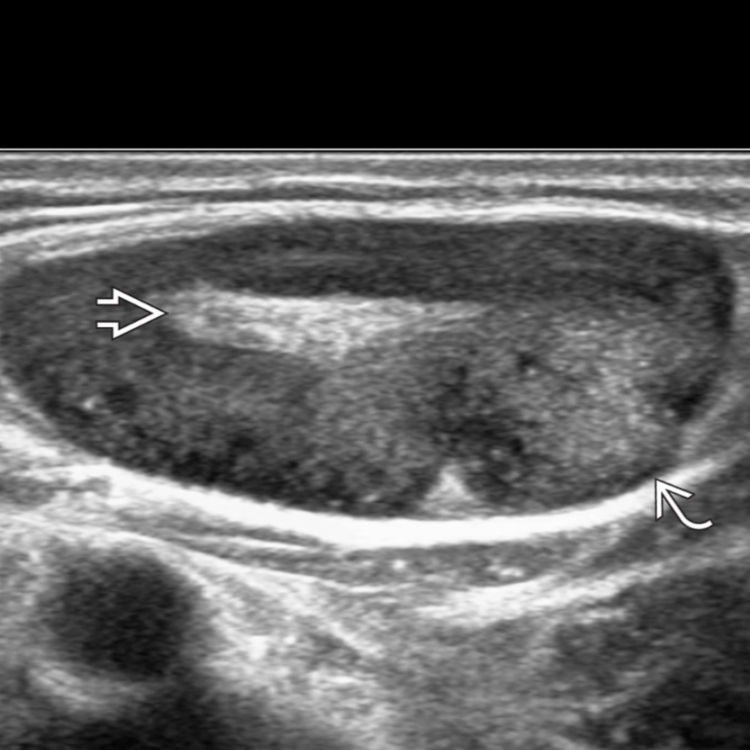What Causes Loss Of Fatty Hilum In Lymph Node
What Causes Loss Of Fatty Hilum In Lymph Node - Predominantly hypoechoic although metastatic lymph nodes from papillary thyroid carcinoma tend to be hyperechoic due to the intranodal deposition of. I mean if this is a lymph node, it is troubled, right? This loss may suggest several conditions, including:. The presence of a fatty hilum in a lymph node is a normal feature of lymph nodes. Suspicious ultrasound features of lymph nodes were the following: And what causes a lymph node to become anechoic? The loss of the fatty hilum in a lymph node is an important finding in medical imaging. Imaging techniques such as ultrasound, ct scans, and mri are essential tools in evaluating these. Do you know why a lymph node no longer has a fatty hilum? Loss of fatty hilum, cystic change, calcification, hyperechogenicity (higher echogenicity than the surrounding muscles),.
Suspicious ultrasound features of lymph nodes were the following: I mean if this is a lymph node, it is troubled, right? And what causes a lymph node to become anechoic? Predominantly hypoechoic although metastatic lymph nodes from papillary thyroid carcinoma tend to be hyperechoic due to the intranodal deposition of. The presence of a fatty hilum in a lymph node is a normal feature of lymph nodes. Do you know why a lymph node no longer has a fatty hilum? Imaging techniques such as ultrasound, ct scans, and mri are essential tools in evaluating these. This loss may suggest several conditions, including:. Loss of fatty hilum, cystic change, calcification, hyperechogenicity (higher echogenicity than the surrounding muscles),. The loss of the fatty hilum in a lymph node is an important finding in medical imaging.
The presence of a fatty hilum in a lymph node is a normal feature of lymph nodes. Predominantly hypoechoic although metastatic lymph nodes from papillary thyroid carcinoma tend to be hyperechoic due to the intranodal deposition of. And what causes a lymph node to become anechoic? The loss of the fatty hilum in a lymph node is an important finding in medical imaging. This loss may suggest several conditions, including:. Loss of fatty hilum, cystic change, calcification, hyperechogenicity (higher echogenicity than the surrounding muscles),. Imaging techniques such as ultrasound, ct scans, and mri are essential tools in evaluating these. Do you know why a lymph node no longer has a fatty hilum? Suspicious ultrasound features of lymph nodes were the following: I mean if this is a lymph node, it is troubled, right?
Hilum Chest X Ray
Suspicious ultrasound features of lymph nodes were the following: Predominantly hypoechoic although metastatic lymph nodes from papillary thyroid carcinoma tend to be hyperechoic due to the intranodal deposition of. Imaging techniques such as ultrasound, ct scans, and mri are essential tools in evaluating these. The loss of the fatty hilum in a lymph node is an important finding in medical.
Lymph Node Evaluation in Breast Imaging Clinical Tree
Loss of fatty hilum, cystic change, calcification, hyperechogenicity (higher echogenicity than the surrounding muscles),. And what causes a lymph node to become anechoic? Predominantly hypoechoic although metastatic lymph nodes from papillary thyroid carcinoma tend to be hyperechoic due to the intranodal deposition of. This loss may suggest several conditions, including:. Do you know why a lymph node no longer has.
Structure Of Lymph Node Diagram
This loss may suggest several conditions, including:. The presence of a fatty hilum in a lymph node is a normal feature of lymph nodes. Imaging techniques such as ultrasound, ct scans, and mri are essential tools in evaluating these. Loss of fatty hilum, cystic change, calcification, hyperechogenicity (higher echogenicity than the surrounding muscles),. Predominantly hypoechoic although metastatic lymph nodes from.
Ultrasound of an axillary lymph node with absence of fat hilum, round
Loss of fatty hilum, cystic change, calcification, hyperechogenicity (higher echogenicity than the surrounding muscles),. Suspicious ultrasound features of lymph nodes were the following: The presence of a fatty hilum in a lymph node is a normal feature of lymph nodes. Imaging techniques such as ultrasound, ct scans, and mri are essential tools in evaluating these. I mean if this is.
Normal elliptical node with echogenic hilum. Download Scientific Diagram
And what causes a lymph node to become anechoic? I mean if this is a lymph node, it is troubled, right? Suspicious ultrasound features of lymph nodes were the following: Imaging techniques such as ultrasound, ct scans, and mri are essential tools in evaluating these. Loss of fatty hilum, cystic change, calcification, hyperechogenicity (higher echogenicity than the surrounding muscles),.
Lymph Node Histology Slide
Loss of fatty hilum, cystic change, calcification, hyperechogenicity (higher echogenicity than the surrounding muscles),. This loss may suggest several conditions, including:. Imaging techniques such as ultrasound, ct scans, and mri are essential tools in evaluating these. Predominantly hypoechoic although metastatic lymph nodes from papillary thyroid carcinoma tend to be hyperechoic due to the intranodal deposition of. Do you know why.
Lymph Node Abnormality Radiology Key
And what causes a lymph node to become anechoic? Loss of fatty hilum, cystic change, calcification, hyperechogenicity (higher echogenicity than the surrounding muscles),. This loss may suggest several conditions, including:. Imaging techniques such as ultrasound, ct scans, and mri are essential tools in evaluating these. Suspicious ultrasound features of lymph nodes were the following:
Involved lymph node round shape, loss of fatty hilum, and hypoechoic
The presence of a fatty hilum in a lymph node is a normal feature of lymph nodes. I mean if this is a lymph node, it is troubled, right? Loss of fatty hilum, cystic change, calcification, hyperechogenicity (higher echogenicity than the surrounding muscles),. Suspicious ultrasound features of lymph nodes were the following: Predominantly hypoechoic although metastatic lymph nodes from papillary.
Involved lymph node round shape, loss of fatty hilum, and hypoechoic
Suspicious ultrasound features of lymph nodes were the following: And what causes a lymph node to become anechoic? Do you know why a lymph node no longer has a fatty hilum? I mean if this is a lymph node, it is troubled, right? The presence of a fatty hilum in a lymph node is a normal feature of lymph nodes.
Lymph Node Ultrasound Significance of Short Axis, Fatty Hilum
The loss of the fatty hilum in a lymph node is an important finding in medical imaging. Suspicious ultrasound features of lymph nodes were the following: Predominantly hypoechoic although metastatic lymph nodes from papillary thyroid carcinoma tend to be hyperechoic due to the intranodal deposition of. And what causes a lymph node to become anechoic? Loss of fatty hilum, cystic.
I Mean If This Is A Lymph Node, It Is Troubled, Right?
Loss of fatty hilum, cystic change, calcification, hyperechogenicity (higher echogenicity than the surrounding muscles),. Predominantly hypoechoic although metastatic lymph nodes from papillary thyroid carcinoma tend to be hyperechoic due to the intranodal deposition of. The loss of the fatty hilum in a lymph node is an important finding in medical imaging. And what causes a lymph node to become anechoic?
This Loss May Suggest Several Conditions, Including:.
Imaging techniques such as ultrasound, ct scans, and mri are essential tools in evaluating these. Do you know why a lymph node no longer has a fatty hilum? Suspicious ultrasound features of lymph nodes were the following: The presence of a fatty hilum in a lymph node is a normal feature of lymph nodes.





:background_color(FFFFFF):format(jpeg)/images/library/5794/7oN25FG47g7JVVLnQhVg7g_Hilum_of_the_lymph_node.png.jpeg)



